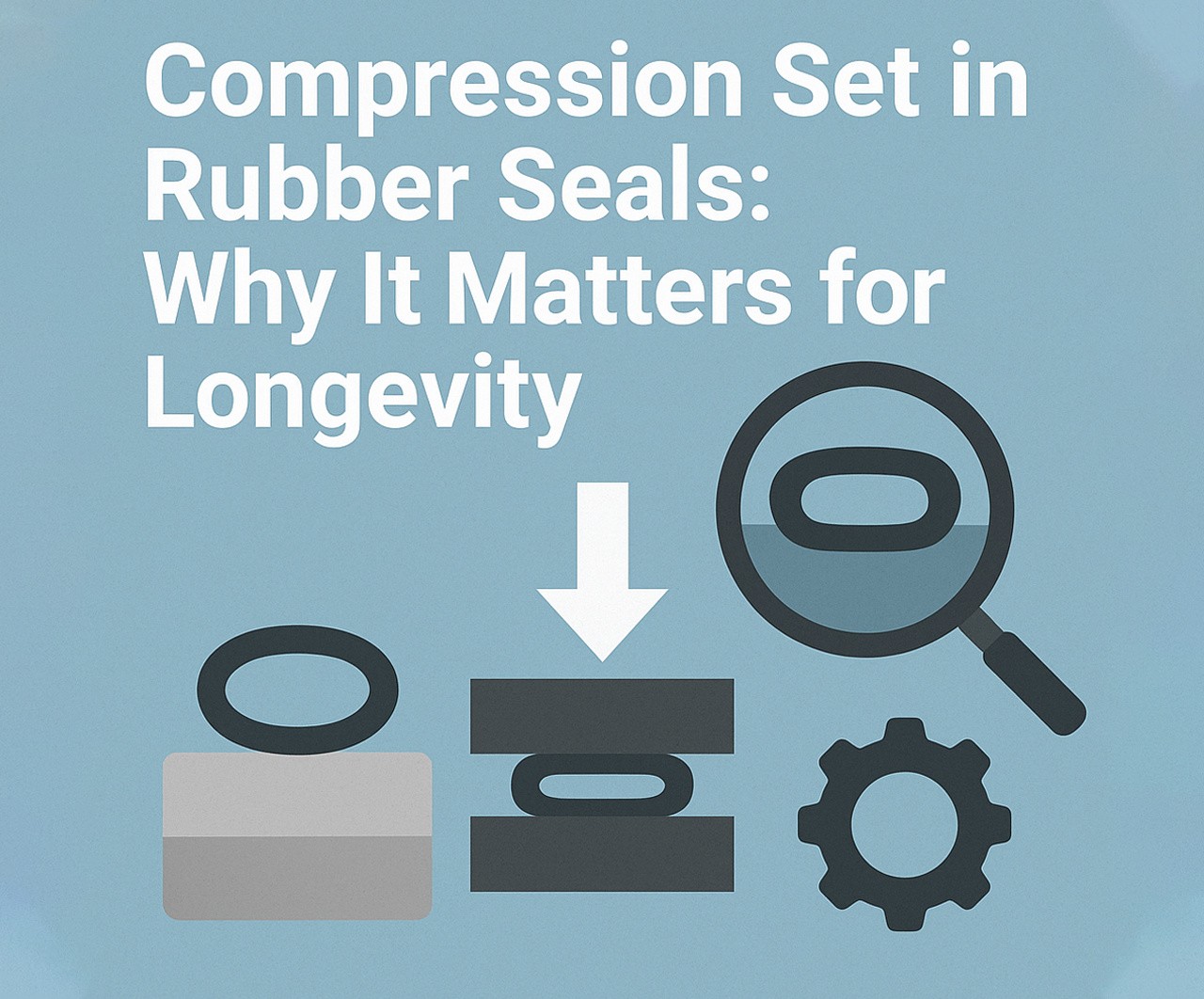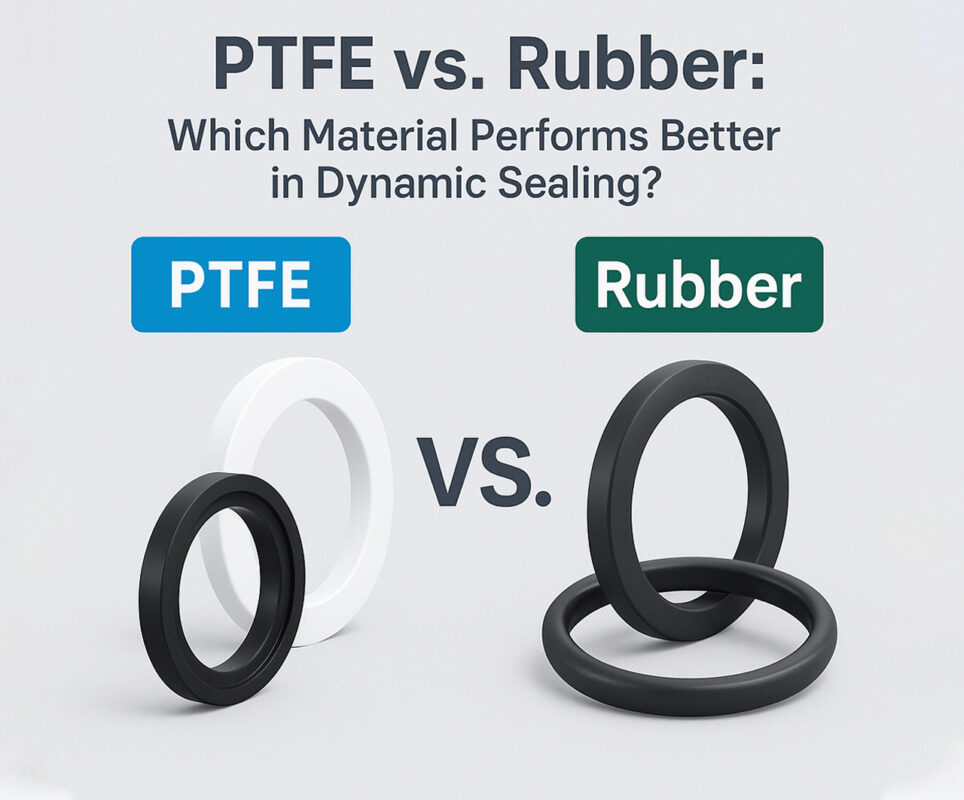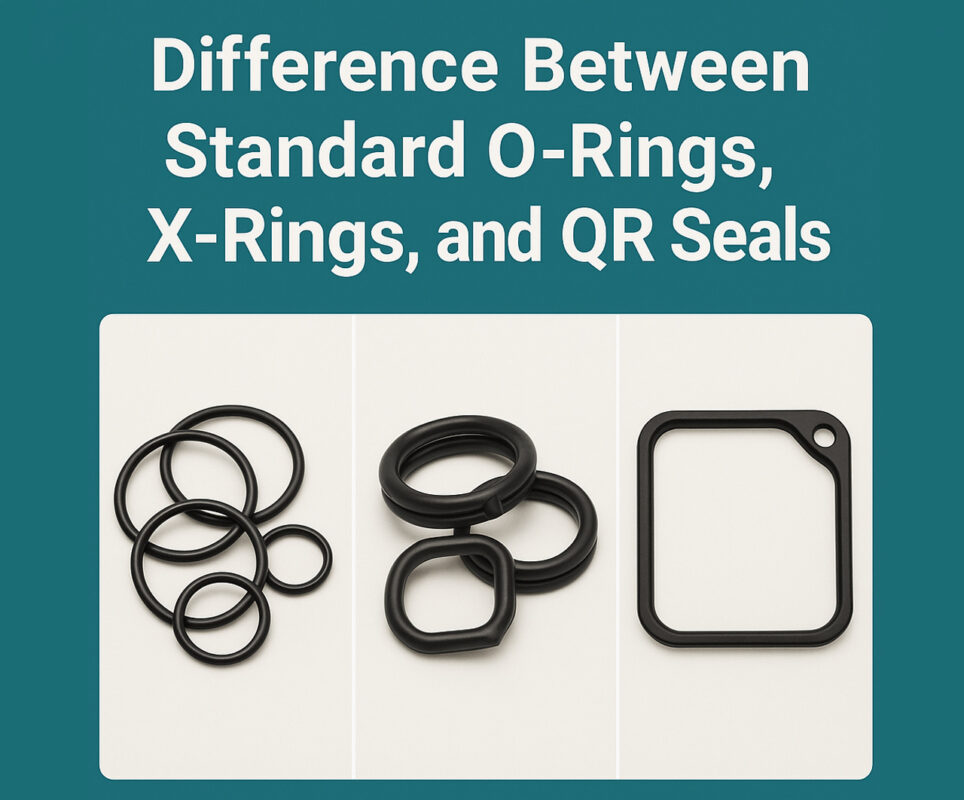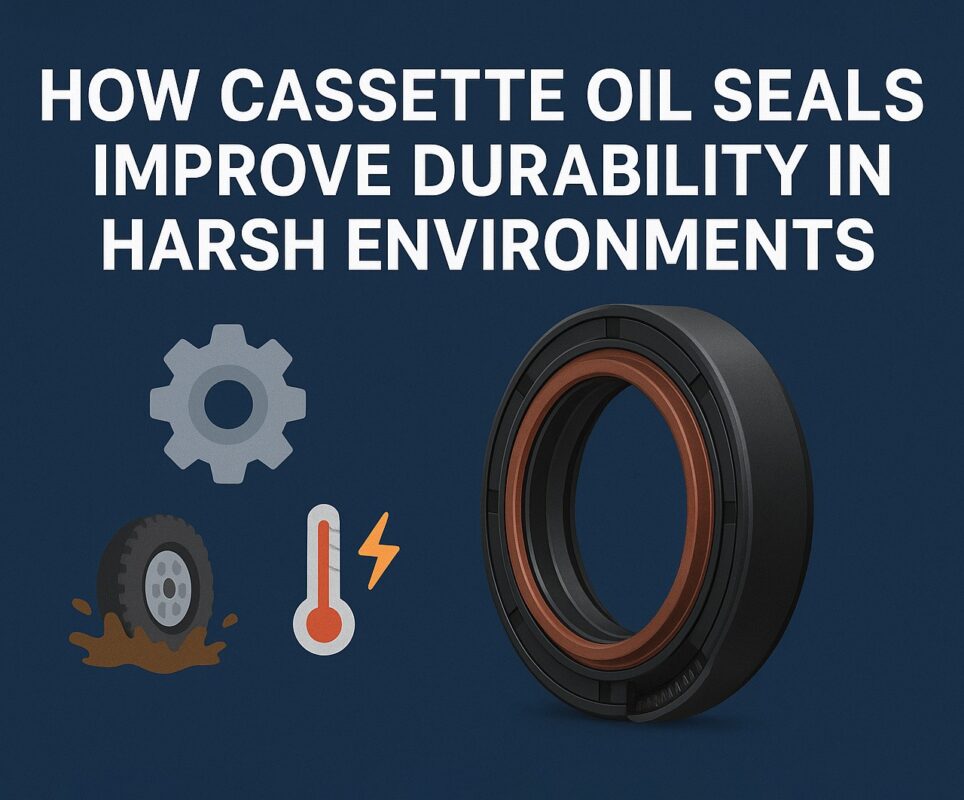In the world of sealing solutions, whether you’re securing garage door seals bottom rubber, installing rubber seals and gaskets, or replacing a gasket rubber seals in an industrial application, there’s a silent destroyer that often goes unnoticed—compression set. This term refers to a material’s tendency to lose its ability to return to its original shape after being compressed for a long period. While small, the implications of a high compression set are massive. From air leaks to full system failures, understanding and preventing compression set is critical for long-term performance and energy efficiency.
This article dives into what compression set means, how it affects rubber sealing components, and how to select and maintain materials for optimal longevity. Know more..
What Is Compression Set?
Compression set is the permanent deformation a material undergoes when subjected to compressive stress over time. In sealing terms, it’s the measure of how well a rubber or elastomer component returns to its original thickness after being compressed.
A rubber seal works by creating a barrier—pressed tightly between two surfaces. When it loses elasticity (due to compression set), it can no longer apply sufficient pressure to maintain the seal. This is especially concerning for:
- Garage door seals bottom rubber exposed to repeated opening and closing
- High-precision rubber seals and gaskets in HVAC, automotive, and hydraulic systems
- Static gasket rubber seal setups under long-term pressure
Why Does Compression Set Matter?
- Seal Failure When a rubber seal takes a permanent set, gaps form. Air, water, or contaminants leak through. In systems requiring airtight or watertight sealing, this is catastrophic.
- Energy Loss A leaking garage door seals bottom rubber allows drafts, causing HVAC systems to work harder. This drives up energy bills and shortens equipment life.
- Increased Maintenance Replacing degraded rubber seals and gaskets prematurely adds unnecessary maintenance cycles and cost.
- Safety Hazards In gas or pressure systems, a compromised gasket rubber seal may result in leaks that pose health and safety risks.
Factors That Contribute to Compression Set
- Temperature Heat accelerates rubber degradation. If seals are exposed to constant high temperatures (e.g., engine compartments), they lose rebound faster.
- Time Under Load The longer a seal is compressed, the greater its chance of permanent deformation.
- Material Type Not all rubber is created equal. For instance:
- EPDM: Good for weather seals (e.g., garage door seals bottom rubber)
- NBR (nitrile): Common for gasket rubber seal in oil systems
- Silicone: Great for high and low temperature but prone to compression set if not formulated correctly
- Chemical Exposure Oils, fuels, and cleaning agents can weaken seal material over time.
- Improper Installation Overtightening fasteners or compressing a seal beyond its design range hastens failure.
Real-Life Impacts
Case 1: Garage Door Inefficiency
A homeowner noticed cold drafts despite a new garage door seals bottom rubber. After inspection, the seal had flattened and wasn’t making contact with the floor. The issue? A low-grade EPDM that had developed high compression set within just 6 months.
Case 2: Industrial Gasket Blowout
A production line faced downtime due to repeated gasket rubber seal failures in a heat exchanger. Post-analysis showed a poor-quality NBR compound with a 40% compression set rating—too high for the high-temp application.
Measuring Compression Set
Compression set is typically tested according to ASTM D395 or ISO 815 standards. A sample is compressed to 25% of its height at a specified temperature and time, then allowed to recover.
Formula: Compression Set (%) = [(Original Thickness – Recovered Thickness) / (Original Thickness – Compressed Thickness)] x 100
Lower percentages indicate better recovery.
Benchmark values:
- <10% = Excellent
- 10–20% = Acceptable
- 30% = Poor, likely to cause seal failure
How to Reduce Compression Set
- Choose the Right Material For outdoor applications like garage door seals bottom rubber, use UV-stabilized EPDM. For chemical systems, go with FKM or advanced perfluoroelastomers.
- Use Design-Appropriate Compression Follow the OEM’s torque or pressure specs to avoid over-compressing seals.
- Avoid Continuous High-Temperature Exposure If unavoidable, select materials rated for the temperature range. Silicone or FKM performs better than NBR in heat.
- Implement Regular Maintenance Checks Inspect seals regularly. For rubber seals and gaskets in rotating or vibratory environments, periodic checks are essential.
- Store Seals Properly Exposure to light, ozone, or extreme cold/hot environments before installation can accelerate degradation.
Choosing Low Compression Set Materials
| Material | Compression Set Rating | Ideal Applications |
| EPDM | Low (10–15%) | Garage door seals bottom rubber, weather seals |
| Nitrile (NBR) | Moderate (15–25%) | Oil and fuel systems |
| Silicone | Variable (10–35%) | Food, medical, cold storage |
| FKM (Viton) | Low (5–10%) | High temp & chemical |
| Neoprene | Moderate (15–30%) | Marine, general industrial |
Innovations in Rubber Formulations
Modern material science is helping push the boundaries of compression resistance:
- Nano-reinforced elastomers: Add microscopic fillers to strengthen seal memory
- Hybrid compounds: Combine two materials for improved temperature and chemical resistance
- Thermoplastic elastomers: Offer lower compression set and recyclability
Next-gen rubber seals and gaskets will incorporate predictive maintenance features, such as embedded RFID to track life cycles.
Installation Tips to Prevent Compression Set
- Don’t overtighten bolts or clips on gasket rubber seals
- Use sealing lubricants that won’t chemically react with the rubber
- Allow for thermal expansion in hardware design
- Use support rings in high-pressure applications to prevent extrusion and deformation
Proper installation is your first defense against premature seal fatigue.
Frequently Asked Questions
Q: How long should a rubber seal last? A: Depends on material and conditions. High-quality EPDM garage door seals bottom rubber may last 5–10 years; industrial gasket rubber seals might need replacement every 1–3 years in extreme applications.
Q: Is compression set reversible? A: No. Once a seal has taken a permanent set, it should be replaced.
Q: What are signs of high compression set? A: Gaps, fluid leaks, visible flattening, and loss of tension in the seal.
Final Thoughts: The Silent Saboteur
Compression set may not be visible at first glance, but it’s one of the leading causes of failure in rubber seals and gaskets. Whether you’re managing garage door seals bottom rubber, maintaining high-performance machinery, or selecting a gasket rubber seal for a new project, understanding how materials behave under pressure and time is essential.
By choosing the right materials, designing with appropriate tolerances, and maintaining vigilance, you can drastically extend the life of your sealing components—and your systems as a whole.






